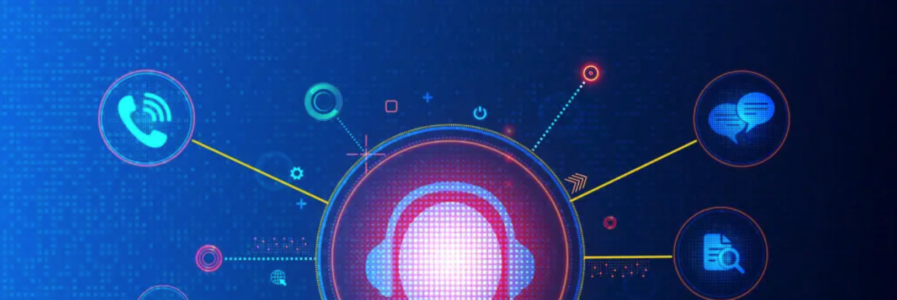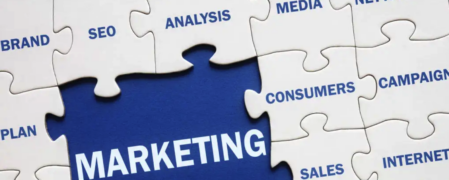Understanding the Omnichannel Marketing Framework: A Guide to Seamless Customer Experiences

In today’s interconnected world, consumers interact with brands through multiple channels—websites, social media, email, physical stores, and more. The Omnichannel Marketing Framework is a strategic approach that integrates these touchpoints to deliver a consistent, seamless, and personalized customer experience across all channels.
This article explores the key components, benefits, and practical applications of omnichannel marketing, helping businesses create cohesive and engaging customer journeys.
What is Omnichannel Marketing?
Omnichannel marketing focuses on providing customers with a unified brand experience regardless of how or where they engage with a company. Unlike multichannel marketing, which simply uses multiple channels, omnichannel marketing integrates these channels to work together harmoniously.
Key Characteristics of Omnichannel Marketing:
- Seamless Integration: Channels are interconnected, ensuring a consistent user experience.
- Personalization: Tailored messages and offers based on customer behavior and preferences.
- Real-Time Engagement: Interactions are responsive and adaptive to customer actions.
- Customer-Centricity: Focuses on the customer journey rather than individual channel performance.
The Core Components of the Omnichannel Marketing Framework
1. Channels
Channels include all the touchpoints where customers interact with a brand, both online and offline.
Examples:
- Online: Websites, mobile apps, social media, email, chatbots.
- Offline: Physical stores, events, call centers, direct mail.
Omnichannel Approach:
Integrate these channels so that customer interactions on one channel influence and complement experiences on others.
2. Customer Data
Data is the foundation of omnichannel marketing. It provides insights into customer behavior, preferences, and interactions.
Sources of Data:
- Website analytics.
- Purchase history.
- Social media activity.
- CRM systems.
Tools for Data Integration:
- Customer Data Platforms (CDPs).
- Marketing Automation Tools.
- Analytics Platforms.
Example:
A retailer tracks a customer browsing shoes online and sends an email with a discount code for the exact pair they viewed.
3. Personalization
Tailoring messages and experiences to individual customers based on their data creates relevance and fosters loyalty.
Strategies:
- Dynamic Content: Adjust website or app interfaces based on user preferences.
- Predictive Analytics: Use AI to recommend products or content.
- Behavioral Triggers: Send emails or notifications based on customer actions, like cart abandonment.
Example:
A streaming platform recommends new shows based on a user’s viewing history and genre preferences.
4. Consistency
Consistency across channels builds trust and reinforces brand identity. Customers should feel they are engaging with the same brand, whether online or offline.
Strategies:
- Use the same design elements (logos, colors, typography) across all channels.
- Ensure messaging aligns with the brand’s voice and tone.
- Synchronize promotions and offers across platforms.
Example:
A clothing store ensures that its in-store sales staff are aware of online promotions, allowing customers to redeem offers regardless of channel.
5. Real-Time Synchronization
Real-time data and systems ensure that customer interactions on one channel immediately influence their experience on others.
Technologies for Synchronization:
- Unified commerce platforms.
- APIs connecting point-of-sale systems to online stores.
- Chatbots and live chat tools integrated with CRM data.
Example:
A customer purchases a product online and receives an in-store pickup notification, with staff already prepared for their arrival.
Benefits of Omnichannel Marketing
1. Enhanced Customer Experience
By delivering seamless, personalized interactions, omnichannel marketing improves customer satisfaction and loyalty.
Example:
A customer starts browsing on their phone, continues shopping on a desktop, and completes the purchase in-store—all without disruption.
2. Increased Engagement
Omnichannel strategies ensure customers stay engaged through tailored messaging and cohesive branding.
Example:
Targeted push notifications and emails keep customers informed and interested in promotions or events.
3. Higher Revenue
Customers engaging through multiple channels often spend more than single-channel users.
Statistics:
Studies show omnichannel shoppers have a 30% higher lifetime value than single-channel shoppers.
4. Improved Data Insights
Combining data from all channels provides a holistic view of customer behavior, enabling better decision-making.
Example:
Analyzing data from both online and in-store purchases reveals trends, like which products perform best in specific regions.
Implementing an Omnichannel Marketing Strategy
Step 1: Understand Your Audience
Use surveys, focus groups, and data analysis to understand customer preferences and behaviors.
Action Item:
Create detailed customer personas that include demographics, behaviors, and preferred channels.
Step 2: Map the Customer Journey
Identify all touchpoints customers interact with, from awareness to post-purchase.
Action Item:
Create a journey map showing how customers move between channels.
Step 3: Integrate Technology
Adopt tools that enable data sharing and synchronization across channels.
Action Item:
Implement a CRM system or CDP that centralizes customer data for easy access by all teams.
Step 4: Personalize Communications
Use customer data to deliver personalized messages and offers.
Action Item:
Segment your audience and use dynamic content for email campaigns.
Step 5: Test and Optimize
Continuously measure performance and refine your approach based on results.
Action Item:
Use A/B testing to identify what works best for different customer segments.
Examples of Omnichannel Marketing in Action
1. Starbucks
- Integration: The Starbucks app allows customers to order, pay, and collect rewards seamlessly across online and in-store experiences.
- Consistency: Customers can track their rewards or reload cards through the app, website, or in-store POS systems.
2. Amazon
- Personalization: Recommends products based on browsing history and past purchases.
- Synchronization: Customers can start a purchase on one device and complete it on another without losing progress.
3. Nike
- Integration: Combines its app, website, and physical stores to deliver tailored shopping experiences.
- Personalization: The Nike app offers customized workout plans and product recommendations based on user activity.
Challenges of Omnichannel Marketing
1. Data Silos
Disparate systems may prevent seamless data sharing across channels.
2. High Implementation Costs
Investing in technology and integration tools can be expensive for small businesses.
3. Measuring Success
Attributing ROI to specific channels in an integrated system can be challenging.
Conclusion
The Omnichannel Marketing Framework is essential for delivering exceptional customer experiences in a digital-first world. By integrating channels, leveraging data, and focusing on personalization, businesses can build trust, loyalty, and long-term success.
Whether you’re a small business or a global brand, embracing omnichannel marketing can transform your customer relationships and drive growth.







